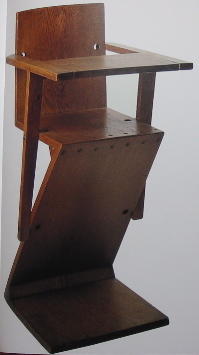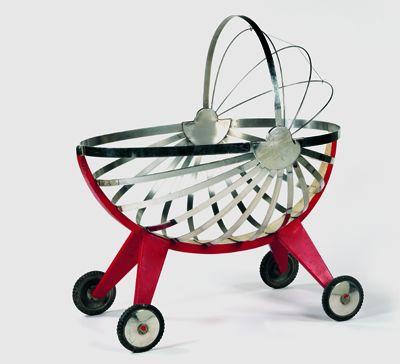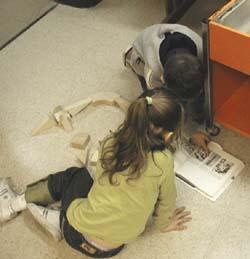

I am a firm believer in the power of environment to nurture learning...or to prevent it. Schools are not always "learning friendly" as budget issues and just plain lousy design have shaped what we work with today, no matter how sound the original building plan. For instance, as a light-hungry person, I have always been angered by the blocking of windows to save energy or to save money over maintaining windows.
If you consider a school as a device to promote learning, you also have to consider every design revision from the point of view of whether it promotes learning or retards it. Humans are not troglodytes, we respond to sunlight chemically and it effects our mental activity! Currently I teach 2 days in a windowless basement where the one window is bricked up. Other basement classrooms had windows installed but, for some reason unknown to me, my room and the computer lab for K-2 were bricked up!!
phew...deep breath...relax...
Anyway, there is an excellent book that shows what has been done when designers truly respect learning environments. Good design does NOT necessarily mean higher cost ...it means a reorganizing of thinking and planning around the primary purpose of the school...children learning.


Kindergarten Art
The book is not easy reading, but if you dip in and out as things catch your eye it is cool. It is absolutely worth the trouble of asking inter-library loan for this book as simply looking at the pictures will give you a shot of energy to change things within your power to be changed! Besides...it's fun :-)
This next pic is not related to Rietveld, but it is very slick. I can't leave it out...

I bumped into a very nice site aimed at men with new babies. It is an excellent place for lots of stuff.
http://daddytypes.com/archive/cat_furniture.php
And very last is THE chair Rietveld is known for that you should know...

Designers from this era (early 1900s) used blocks to play around with as they explored basic shapes. I have found blocks to be EXTREMELY popular with children K through 5 in the one school I am posted where there is enough room to have blocks. With the evolution of kindergarten in the last decade from a time of socialization and exploration of the world and its inevitable causes and effects into a drier academic ABC, 123 curriculum kids are growing up not knowing how to stack blocks. I kid you not. I see it in my classes. It takes about 4 sessions with blocks for an older child to begin to work out the strategies that allow building up with some hope of stability. It takes many more times before I observe the big shift when it starts to really click!

BTW Montesorri schools support and protect this important stage of exploration.
No comments:
Post a Comment